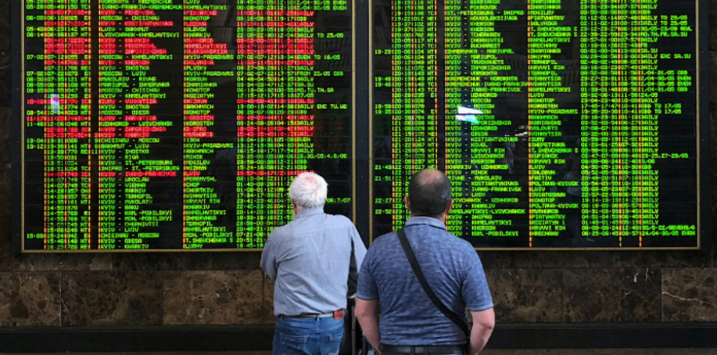
Scratching your head about the stock market rally? It makes perfect sense.
With the U.S. economic picture deteriorating, you might be wondering why the market is rallying. It’s simple if you remember that hope springs eternal.
U.S. President Donald Trump’s first chaotic days in office have been economically disruptive, thanks to a whirlwind 143 executive orders, a tornado of declared emergencies, and tariffs heralding a trade war – particularly the 135 per cent levy on Chinese imports.
At one point, he had single-handedly caused one of the swiftest declines in the stock market since the 1950s.
Understandably, investors have focused on the negatives, including the first quarter of negative economic growth in three years (which Trump predictably attributed to his predecessor Joe Biden), and in so doing caused the S&P 500 to plunge as much as 19 per cent. Fears of a stagflationary spiral haven’t helped.
But investors need to first note that the sell-off was not due to an emerging financial, macroeconomic or liquidity crisis. It was a sentiment shock. Markets often rally after the shock has passed and a reflection of the medium and longer term impacts is undertaken.
Many investors will now be pointing to the economic fallout from the uncertainty generated by Trump’s tumultuous policy initiatives, and backflipping. These concerns are grounded in reality.
In the first quarter of the year, the U.S. economy went backward for the first time in three years, Goldman Sachs forecasts U.S. Gross Domestic Product (GDP) growth at just 0.5 per cent for 2025, consumer confidence has cratered to pandemic-era lows, and collapsing trade with China signals a looming corporate revenue and margin crisis. Elsewhere, S&P 500 earnings expectations are seeing their sharpest downward revision since 2020.
Meanwhile, industry leaders like Southwest Airlines’ CEO Robert Jordan describes conditions as recessionary, while Chipotle and PepsiCo report consumers cutting back to save money.
Elsewhere, the University of Michigan’s consumer confidence survey reported an 11 per cent plunge in early April (clearly not Biden!), fears of job losses and deteriorating business conditions are universal across demographics, and a record-high share of people are expecting worse economic conditions. Rising credit card delinquencies and minimum payments also reflect financial strain amongst consumers.
This uncertainty has driven some investors to seek refuge in private credit funds, shunning stock market volatility altogether.
Importantly, however, this is not a crisis but a short-term sentiment shock, and history suggests markets can rebound swiftly after uncertainty peaks. One certainly expects the final version of tariffs to be less painful than the worst-case scenario first delivered by Trump.
More importantly, and ironically, the same negative economic data that causes investors to panic may also be the inspiration Trump requires to reconsider his aggressive stance. Soaring inflation expectations, plummeting new orders, and rising input costs threaten small businesses and erode political capital. Consumer panic and recessionary signals from industry leaders could push Trump to scale back tariffs to avoid a downturn blamed on his policies.
These red flags, coupled with Trump’s recent 90-day tariff freeze and overtures toward trade deals, suggest flexibility and hint at a backflip that could stabilise markets.
For investors, this presents a contrarian opportunity. If Trump moderates tariffs –perhaps through phased implementation or a zero-tariff North American agreement –the worst-case scenario fades, paving the way for a robust equity rally. The U.S. economy’s four per cent unemployment and robust job growth, may also support this optimism. As uncertainty eases, high-quality businesses trading at compressed valuations may yet shine, rewarding those who stay the course.